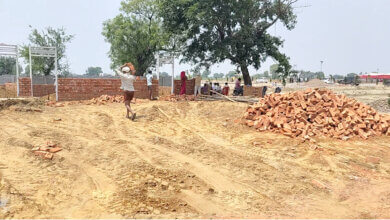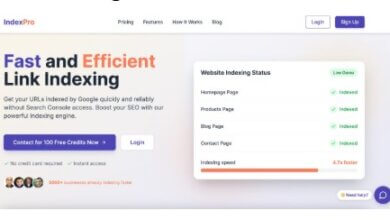Freehold vs Leasehold – Key Differences & Strategic Insights
Navigating Malaysian Property Taxes

Understanding the distinction between the properties of freehold and leasehold in Malaysia is fundamental for any investor or homeowner in Malaysia. While ownership rights are the core differentiator, the tax implications significantly impact long-term costs, investment returns, and succession planning. Choosing wisely requires not just understanding “forever” versus “temporary” ownership, but also how each structure interacts with Malaysia’s property tax regime.

Freehold vs Leasehold: The Foundational Difference
-
Freehold: This grants the owner absolute and perpetual ownership of the land and the building upon it (subject to any existing encumbrances). The title belongs to the owner indefinitely, passing to heirs upon death. It offers maximum control and security.
-
Leasehold: This grants the owner the right to use the land and property for a fixed period, typically 99 years (though 60 or 999 years exist). Ownership effectively reverts to the State Authority (the Landowner) upon lease expiry. Leasehold titles require periodic renewal (involving cost and state approval) and are subject to conditions set by the Landowner.
The Malaysian Property Tax Landscape: Key Charges
Both freehold and leasehold properties are subject to several common taxes and charges, but their calculation and long-term implications can differ significantly:
-
Stamp Duty (Duti Setem):
-
What it is: A tax levied on legal documents, primarily the Sale and Purchase Agreement (SPA) and Memorandum of Transfer (MOT), when purchasing a property. It’s a one-time cost borne by the buyer.
-
Freehold vs Leasehold: Calculation is identical. Rates are progressive based on property price:
-
First RM 500,000: 1%
-
Next RM 500,001 to RM 1,000,000: 2%
-
Next RM 1,000,001 to RM 5,000,000: 3%
-
Above RM 5,000,000: 4%
-
-
Leasehold Nuance: For leasehold transfers, the Land Office may charge a separate Consent-to-Transfer Fee (typically 0.5%-1% of the property value). This is an administrative fee paid to the State Authority for approving the change of ownership on the lease, in addition to stamp duty. Freehold transfers generally don’t require this specific consent (though standard Land Office registration fees apply).
-
-
Quit Rent (Cukai Tanah):
-
What it is: An annual tax paid to the State Land Office for the right to occupy the land. It’s a nominal fee per square foot/square meter.
-
Freehold vs Leasehold:
-
Freehold: Owners pay quit rent perpetually. Rates are generally very low (e.g., RM 0.06 to RM 0.50 per sq ft annually, varying significantly by state and location). While perpetual, the cost is minimal.
-
Leasehold: Owners also pay annual quit rent for the lease duration. Rates are calculated similarly to freehold and are typically comparable during the lease term. However, the critical difference arises at lease renewal.
-
-
-
Assessment Tax (Cukai Pintu / Cukai Taksiran):
-
What it is: An annual tax levied by the Local Council (Pihak Berkuasa Tempatan – PBT) like DBKL, MBPJ, etc., based on the assessed annual rental value of the property. It funds local services (rubbish collection, street lighting, maintenance).
-
Freehold vs Leasehold: Calculation is identical. The rate (usually 4-7% of the assessed annual value) depends on the property type (residential, commercial) and the specific PBT. Ownership type (freehold/leasehold) does not directly factor into the assessment rate or calculation methodology.
-
-
Real Property Gains Tax (RPGT):
-
What it is: A tax levied on the profit made from selling a property within a specified timeframe.
-
Freehold vs Leasehold:
-
Holding Period Rates: The RPGT rates themselves (based on how long you owned the property before selling) are the same for both freehold and leasehold:
-
Disposal within 3 years: 30%
-
Disposal in the 4th year: 20%
-
Disposal in the 5th year: 15%
-
Disposal in the 6th year and onwards: 0% (for Malaysian citizens & PRs; companies still pay 10%)
-
-
Profit Calculation & Leasehold Depreciation: This is the crucial difference.
-
Freehold: The RPGT profit is generally calculated as: Selling Price – Original Purchase Price – Permitted Expenses (e.g., renovation, legal fees, agent commission).
-
Leasehold: The RPGT profit calculation must account for the diminishing value of the lease over time. The formula is:
Chargeable Gain = Selling Price - [Original Purchase Price x (Remaining Lease at Sale / Original Lease at Purchase)] - Permitted Expenses -
Impact: As the lease shortens (especially below 60-70 years), the “depreciated” original cost used in the RPGT calculation becomes significantly lower. This often results in a higher chargeable gain (profit) and therefore a higher RPGT liability for leasehold properties sold later in their lease term, compared to a freehold sold after the same period, even if the actual cash profit was similar. This reflects the decreasing market value of the leasehold interest itself.
-
-
-
-
Lease Renewal Premium:
-
What it is: A major cost exclusive to leasehold properties. Paid to the State Land Office when applying to renew the lease (typically before it expires, e.g., when it falls below 30-50 years to maintain marketability).
-
Calculation: Complex and varies significantly by State Authority. It’s often a substantial percentage (e.g., 25% to even 33% or more) of the Current Market Value (CMV) of the land at the time of renewal, multiplied by the fraction of the lease term being renewed (e.g., renewing another 99 years). This can be a very significant six-figure sum, representing a major financial hurdle. Freehold owners avoid this entirely.
-
Strategic Considerations: Beyond the Tax Rates
-
Long-Term Cost: While annual quit rent and assessment tax are similar, the potential for a massive lease renewal premium decades down the line is a defining financial burden of leasehold. Factor this into long-term investment models.
-
Marketability & Value: Freehold properties generally command a premium (10-30%+) over comparable leasehold properties due to perpetual ownership security. Leasehold values depreciate as the lease shortens, especially below 60-70 years, unless renewed.
-
Financing: Banks may be more cautious financing leasehold properties with short remaining leases (e.g., < 50-60 years), potentially offering lower Loan-to-Value ratios (LVR) or higher interest rates. Freehold generally faces fewer financing hurdles.
-
Consent Delays: The need for State Authority consent to transfer or charge (mortgage) leasehold properties can add time and uncertainty to transactions compared to freehold.
-
The “99+99” Trend: Some newer developments offer “99+99” years or similar structures. While extending the term, they are still technically leasehold and subject to renewal costs/premiums at the end of the first 99-year period. Verify the exact legal structure.
Conclusion: Weighing Security, Cost, and Flexibility
The choice between freehold and leasehold in Malaysia involves a fundamental trade-off:
-
Freehold: Offers maximum security, perpetual ownership, and avoids lease renewal premiums. It generally provides better long-term value retention and simpler inheritance. RPGT calculations are typically more straightforward. The trade-off is usually a higher initial purchase price.
-
Leasehold: Often has a lower entry price compared to similar freehold properties. However, owners face potential diminishing value as the lease shortens, the significant future cost of lease renewal, potentially higher RPGT liabilities later on, and the hassle of consent requirements. Its value is intrinsically linked to the remaining lease term.
Investors and buyers must look beyond the sticker price. Factor in the long-term tax implications (especially RPGT calculation differences and the specter of lease renewal premiums), financing considerations, and personal timelines. Freehold often provides greater peace of mind and long-term financial predictability, while leasehold might offer initial affordability but requires careful management of its finite lifespan and associated costs. Consulting a qualified Malaysian tax advisor and lawyer is essential before making a significant property investment decision.
FAQs on Freehold vs Leasehold Taxes in Malaysia
-
Is the Quit Rent (Cukai Tanah) higher for leasehold than freehold?
-
Answer: Not typically during the active lease term. The annual quit rent rates per square foot/square meter are set by the State Land Office based on location and land type, not primarily on whether it’s freehold or leasehold. Rates for comparable land in the same area are usually similar. The key difference is that freehold owners pay it forever, while leasehold owners stop paying when the lease expires (unless renewed, triggering new costs).
-
-
Do I pay more Real Property Gains Tax (RPGT) when selling a leasehold property?
-
Answer: Potentially, yes, especially if selling later in the lease term. While the RPGT rate is the same, the profit calculation differs. For leasehold, the law requires factoring in the diminishing lease value. This often results in a higher “chargeable gain” (taxable profit) compared to a freehold property sold after the same holding period, leading to higher RPGT, particularly if the remaining lease is short (e.g., below 60 years). Selling a leasehold within the first 5 years usually results in similar RPGT to freehold, but the gap can widen significantly later.
-
-
What is the biggest tax/fee disadvantage of leasehold property?
-
Answer: The Lease Renewal Premium. This is a substantial, often six-figure cost, payable to the State Land Office to extend the lease (e.g., from 60 years remaining back to 99 years). It’s calculated as a significant percentage (e.g., 25-33%+) of the land’s current market value at renewal time. This is a unique and major financial burden that freehold owners completely avoid. It’s the single largest potential long-term cost differentiator.
-
-
Are there any inheritance tax differences?
-
Answer: Malaysia currently has no inheritance or estate tax. Transferring either freehold or leasehold property to heirs upon death involves standard procedures at the Land Office and High Court (for small estate distributions or grant of probate/letters of administration). The key difference lies in the asset’s inherent value and transferability:
-
Freehold: Passes perpetually. Heirs get full ownership.
-
Leasehold: Heirs inherit the remaining lease term. If the lease is short at the time of inheritance, it can significantly impact the property’s value and may necessitate renewal costs sooner for the heirs. The transfer process itself may require consent from the State Authority for leasehold, adding an extra step.
-
-
Is the Consent-to-Transfer fee for leasehold considered a tax?
-
Answer: Technically, it’s an administrative fee, not a tax. However, it functions as a significant transactional cost specific to leasehold. Paid to the State Land Office (usually 0.5% to 1% of property value), it’s required for their approval to change ownership on the leasehold title. This fee adds to the buyer’s upfront costs and can cause transaction delays. Freehold transfers involve Land Office registration fees, but generally do not require this specific “consent” fee.
-




